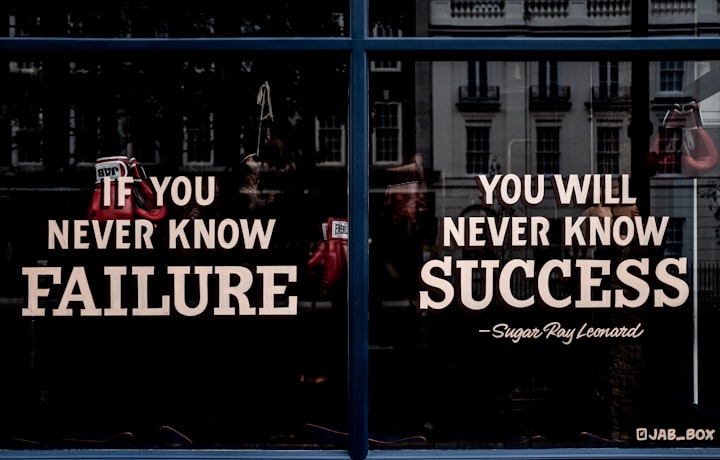How Do You Find Ideas to Write About?
How Do You Not?

There is a classic movie from the ’80s called Night Shift, starring Henry Winkler, Michael Keaton, and Shelley Long. In one scene, Keaton’s character, Bill Blazejowski (Blaze), says to Winkler, “You know why I carry this tape recorder? I’m an idea man, Chuck, I got ideas all day long, I can’t control ‘em.”
That’s me. I’ve got ideas all day long.
Except when I don’t.
Or worse, when I realize I had this fantastic idea five seconds ago, and I have no idea what it was. Normally, I have a memory like one of those things with really good memories.
What are they called? Anyway, sometimes, it fails me.
So, let’s get the second problem out of the way up front. You don’t need to do like Blaze did in Night Shift and carry around a tape recorder. You already have one. It’s called a phone. It contains a voice recorder, a video recorder, and a notepad. There is no excuse not to capture that amazing idea the moment it pops into your head.
Unless it pops back out before you can turn your phone on.
Or if you are in the shower. Which is where all great ideas are born. I think this was first discovered in 1898 by Valdemar Poulsen, who later invented the tape recorder.
But for the most part, like Blaze, I’m an idea man. My current idea list is about 30 items long. This may not seem like much, but there are two factors that control the length of the list. One I’ll get back to later. The other is that I am always actively working on about eight of them, so keeping that pipeline full requires constant input.
So, let’s talk about what happens when you don’t have any ideas.
Wait a minute. Hold the phone. Stop the presses.
You don’t have any ideas? That is a ridiculous concept. Of course, you have ideas. Your head is full of them. All the time. You just have to work on bringing them out and writing them down. And that takes practice.
Okay, so let’s talk about what doesn’t work. At least for me. The list of things that don’t work for finding ideas is a short one. It goes as follows:
Everything anybody has ever said about finding ideas.
Yeah. That one. Doesn’t work for me.
I’ve tried. I’ve tried setting aside an hour or more a week to come up with ideas.
Saturday: Find 25 ideas.
That’s a perfectly good way for me to waste a couple of hours on a Saturday.
Watching YouTube videos, which is better than the alternative.
Staring at a blank screen. I call it Idea Block.
All of the advice I have read about finding ideas just doesn’t work for me. Researching keywords. Reading questions on Quora. Looking for trends and hashtags on Twitter.
#DoesNotWorkForMe
Okay, so let’s talk about what does work:
Be Receptive
Before you can use your tape recorder, you have to turn on your mind recorder. And leave it on.
I didn’t learn much in elementary school, but that’s another story. One thing I did learn, probably my biggest takeaway, came from my 6th-grade science teacher. She taught us that most people use about 10% of our brains and that our brains can do a lot more than we think it can. At the same time.
So, in the back of my brain, there is this little idea collector that is in the on position all the time. In another article I wrote, multitasking is a lie, so I’ll be honest here. You have to switch your attention back and forth between this collector and everything else. And you have to do it constantly. But it will come with practice.
Everything you do, see or hear, think; how can I write about that? Right now, there is a lawnmower running down the street. (I don’t know why, maybe it stole something.) So, I just wrote down:
- How to Find the Right Landscaping Service
- What is the Best Type of Lawn to Plant in Your Area
- When Good Lawnmowers Turn Bad
It will feel a bit awkward to begin with, but once you get used to it, capturing these ideas will become automatic. Practice it often and it will become second nature. (Idea: Where did the term second nature come from?) The key will be to actually capture them in a meaningful way, which brings me to the next subject.
Capturing Ideas
You need to be ready to capture ideas, so prepare for that in advance. If you are a pen and paper person, always keep a notepad and pen handy. Always. If, like me, your handwriting is akin to an as yet undiscovered ancient language, set your phones up.
If you don’t already have one, get yourself a good note-taking app. There are many out there, including free ones that came with your phone. I use Evernote. If you are not familiar with it, you can read about it here.
Also, find and learn how to use your voice recorder for when it isn’t convenient to type. Like if you are chasing a lawnmower down the road that has just stolen your garden gnome.
A variation of the voice recorder I use often is the voice to text option. In almost any app that brings up a keyboard, there will be a microphone button in the corner of the keyboard. Touch that and your phone will record your voice and do a very good job of converting it to text.
But, this next part is crucial. However you capture your ideas, you have to flesh them out at the same time. This doesn’t mean write a paragraph, just make sure you write down what you were thinking at the time. I know this from experience. I have gone to my idea list many times, clicked on one, and sat there staring at it. What is that supposed to mean? Sometimes it comes back to me, sometimes not. That’s the other reason my list isn’t as long as it should be; I have to constantly delete ideas when I can’t remember the context.
Better to write a word or two to remind you exactly what that idea was about.
I Still Got Nothing
Okay, sometimes that doesn’t work or work often enough. Or you are cranking out articles faster than the ideas are coming in. What then? You have to go find some.
Actually, you don’t.
You already have a ton of them. They are your existing articles.
Most of my current articles are in the 800–2000 word range. Sometimes more, sometimes less. But I tend to flesh the article out, rather than trying to keep it short. But there were many years this wasn’t the case. I was writing mostly for content mills, and unless specified otherwise, I tried to keep my articles to about 400 words. It wasn’t worth giving them more.
So, I would write my article as I normally would. In the end, I frequently ended up at 800–1200 words. So what did I do? I chopped them up into two or three articles.
I’m not asking you to do that here, but you can apply the same concept. Look at each of your current articles. How many separate ideas did you present? How many of those ideas could stand on their own? There’s your first bunch of ideas.
Now look again. What did you not say in the article that you could have? What points did you skim over that could be expanded into a full article? Is there something in the article, or the entire article itself that could be presented in the opposing viewpoint. I recently wrote articles on why you should and shouldn’t buy a mirrorless camera.
Using just those techniques, you should be able to come up with several new ideas from each article you have written.
From each and every article you have written. Ever.
And if that’s not enough, do that same exercise with other people’s articles. Don’t worry. You’re not stealing; every writer does this. You look at an article someone else wrote and think, “How would I have written that?” In my photography series, I have found articles such as Ten Ways to Do Something, and taken one of the things on that list and expanded it into an entire article. Or two. Write the opposing viewpoint.
Or just scan titles. I frequently go to a site like Vocal or Feedly and just scan the titles. Within literally seconds, new ideas start popping into my head.
Ideas are all around you. All the time. You just have to be able to see them, to capture them, and to remember them.
And write about them.

About the Creator
Darryl Brooks
I am a writer with over 16 years of experience and hundreds of articles. I write about photography, productivity, life skills, money management and much more.






Comments
There are no comments for this story
Be the first to respond and start the conversation.